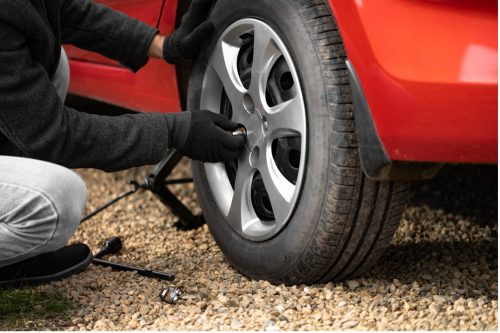
Tires are the only parts of a car, which connect it with the road. Basically, the contact patch of tires is responsible for your fuel efficiency, safety, mobility, and comfort. Their maintenance and care are very important to achieve all these.
You can handle maintenance and care by your physical efforts and personal attention. But some will need help from an expert.
If you are a beginner, you must be familiar with ways of caring for your tires. Some of these ways include:
1. Adjust and Check the Pressure
Over and under-inflated tires wear out easily, waste a lot of fuel, and are likely to burst when your car is at high speed. Luckily, a simple air pump and tire pressure gauge found Eau Claire tire shops or gas stations will make a great difference.
Every month, look at the pressure of the tires. Even without leaks, tires may lose around one psi of pressure every month.
Be sure to also check the pressure before making long road trips. Fit every tire with valve caps so you can maintain the right pressure, stop dust from blocking the valve, and prevent moisture from getting into the tire.
For best results, look at the pressure when tires are cool. If the only option is to check when your tires are hot, add around five psi as advised by manufacturers.
2. Look at the Surfaces
When your tires come into contact with potholes, curbs, or problematic surfaces, such as construction sites or gravel roads, you will also need to check the surface of the tires.
Nails, sharp rocks, and other pointed items can puncture tires regardless of their condition or age.
Slow leaks might result in an eventual flat. Underinflated tires may develop a state of unsafe driving conditions.
Identifying all these issues sooner will mean a great difference between inexpensive repairs compared to costly replacements.
3. Rotate the Tires
Similar to visual inspection, you should rotate the tires regularly. According to many professionals, you must carry out tire rotation between 8,500km and 16,000km.
This significant difference is because of varying road conditions, types of tires, model of a car, and driving habits.
Considering your conditions, ascertain that you rotate your tires. Rotating the tires is very important for tire upkeep and safety. Plus, rotating will enable you to visually inspect the tires, allowing you to detect all the signs of damage.
4. Balance the Wheels and Tires
The concept of balancing tires is to ensure they have an even distribution of weight. If their weight is out of balance, it will make your tires wobble – something that may lead to a bumpy ride, uneven tire wear, and vibrating steering wheels.
If you see all these signs when driving, particularly as you speed up, you probably need to have the tires balanced.
Basically, balancing tires is a painless process. Though you must carry it out precisely and carefully, making it necessary for you to get help from a reliable tire shop.
Concluding Remarks!
Proper care of the tires doesn’t necessarily mean replacing them regularly. What it means is to find ways to keep your car safe.
It is simple to overlook patches of the tires, but carrying out simple checks will improve car handling and yield fuel efficiency.
Interesting Related Article: “Car Care Tips And How To Maintain Your Vehicle In The Fall“
